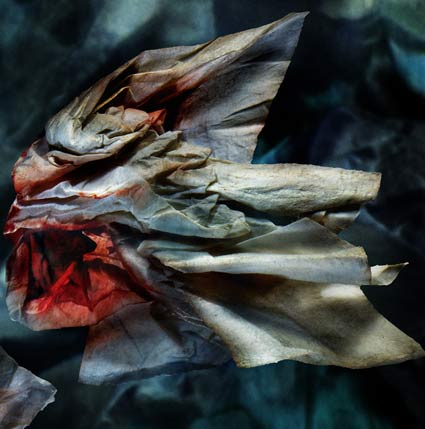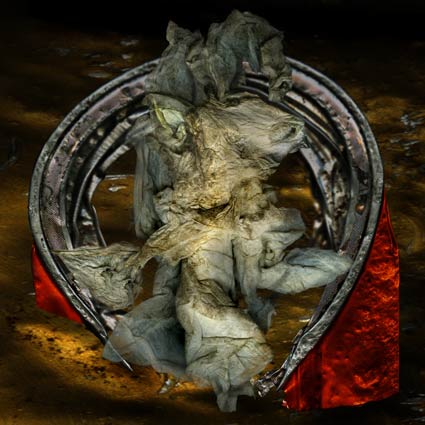François Pohu Lefevre
The Beauties of the Underside
If each object, by definition, receives its value only in function of the utility that it provides (for a given person, in a given context), what can be said about the refuse that litters our metropolises except that it seems to disappear altogether from our field of perception and loses all value once it ceases to serve a specific purpose? Distinct from ordinary objects, detritus marks a limit: standing at the frontier between utility and abjection, it occupies a threshold outside of the comfortable consumer objects that surround us1. It is for this reason that these used and rejected products, more than other trash, may reveal the mechanisms at work in the world of mass produced objects, governed as they are by the law of forced obsolescence.
1For more details on this dialectic of the abject, see Julia Kristeva,Pouvoirs de l’horreur : essai sur l’abjection. This essay indirectly played an important role in gay and lesbian studies, and more generally, in the notion of the queer. The queer It is precisely what society judges abject and that becomes invisble for it. François Pohu Lefevre’s work may be seen as working to give an esthetic value to the queer(meaning, the abject), and therefore, dignity.
The Beauties of the Underside
“Every symbol is an experience, a radical change that must be lived and a leap that must be accomplished. So, there are not symbols, but symbolic experience.”
Maurice Blanchot
Then, how does this movement of excretion – by which consumer society generates its own outside – inform works of art such as that of François Pohu Lefevre? The first, and simplest response to this question, consists not in asking the question, “Why has François Lefevre chosen to work exclusively with refuse?” but instead in rejoicing, disinterestedly, in a quasi-Kantian manner, in the beauty of hisoeuvre without consideration of its “abject” quality. This perspective, in turn, lends itself to an enumeration of the rich formal qualities of his works: for example, the fine plays of transparency in many of his photographs, and even more impressively, the elegant folds (of Baroque inspiration) that almost give these objects the allure of Leibnezian monads. We can, in this way, distance our interpretation both from Lefevre’s approach to art making and to the actual content of his work. In so doing, we repeat a gesture characteristic of Kantian esthetics that allowed certain theorists of African art, for example, to legitimize the exhibition of sacred object by removing them from their original context and presenting them solely for esthetic pleasure.
Yet, while this first approach has certain virtues (such as, that of procuring pleasure), I would like to introduce another (non-Kantian) point of view that does not stop at the exterior beauty achieved by Lefevre’s forms, but attempts to descend into his work’s deeply destabilizing character and to confront it in all of its violence and transgressive energy.


It is, it seems to me, an overthrow of all values that Lefevre is seeking; he attempts a transmutation of the abject, and thus, a symbolic recuperation of that which society expulses (detritus). Commenting on his own practice, François Pohu Lefevre describes his work in the following terms:
People most often speak of the purity of the sky, the beauty of the clouds, but for me that means nothing unless I am capable of finding such beauty down on earth. And when I say earth I’m thinking about the lowest elements of our world, such as the gutter and detritus. What I am trying to show throughout my work is the intrinsic beauty of the non-objects/refuse that our consumer society places at the bottom of its value system. To express this simply, this detritus, for me, are clouds that have missed their landing.
Following Lefevre’s thoughts, his work seeks to engage the viewer in the type of visual experience that the psychiatrist Rorschach invented to give his patients direct access to their unconscious. “Tell me what you see and I will tell you who you are”: this is the simplest expression of this test, and by extension, a slogan that can be inscribed on the frontispiece of François Pohu Lefevre’s oeuvre. From the moment we refuse to see the dual presence of two worlds in this work(a higher world, for which the beauty of the clouds is the paradigm, and the terrestrial world, marked by detritus), and instead, are able to see the simplicity of pure art, we begin to surpass the mental barriers that keeps us from viewing the world liberated from our unconscious repulsions. Lefevre’s oeuvre may aid us to go further in the discovery of the “abject” beauty that inhabits the underside of our world.
Frédéric-Charles Baitinger
Translation: Eric Lynch
Frédéric-Charles Baitinger
François Pohu Lefevre
www.francois-pohu-lefevre.com/
